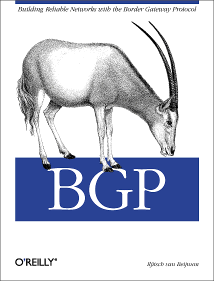
|

|

|
|
Home ·
BGP Expert Test ·
What is BGP? ·
BGP Vendors ·
Links ·
Archives ·
Books ·
My New BGP Book | ||
 (advertisement)
(advertisement)
| ||
|
TCP vulnerability puts BGP at risk (posted 2004-04-20)
Rumors have been floating around for days, as the referrer log for this site shows large numbers of people looking for "BGP hack" and "BGP MD5". But the cat is out of the bag now: NISCC Vulnerability Advisory 236929 Please see the page linked above for detailed information. The short version is that TCP sequence numbers turn out much easier to guess than assumed until now, which makes long-lived TCP sessions vulnerable to reset attacks. Since BGP sessions can remain for days, weeks or even months, and other pertinent information is relatively easy to find, BGP is the protocol most affected by this vulnerability. Fortunately, the BGP TCP MD5 option protects against exactly this problem. Enable it if at all possible. Most, if not all, routers support it. The option is enabled on Cisco routers as follows:
! router bgp 12345 neighbor 192.168.0.1 password use-upto-80-characters ! However, this will break any running BGP sessions so coordinate the change closely with the remote AS. Since this mechanism operates at the TCP level, host-based routers such as Zebra or Quagga running on BSD or Linux typically don't support this option. However, there is some rudimentary support in both OSes, see the SANS advisory. Note: The "BGP TTL hack" or GTSM (see below or above) also offers protection against the TCP vulnerability, without adding the MD5 crypto overhead. And good anti-spoofing filters do the same, but the problem there is that the other AS also needs to implement them, something that can't be assumed. It seems the actual risks aren't as bad as the reports seem to indicate at first glance. I'll post a more detailed analysis later, but from discussions on NANOG it seems the only new aspect is that previously people didn't realize that the RST packet could have any sequence number that falls inside the receive window on the potential victim, which is often around 16k. This means the attacker only has to guess the first 18 bits of the sequence number rather than the full 32 bits. However, she also needs to guess both port numbers, which makes the number of possible combinations an attacker must try around a billion, which amounts to a DoS attack of 10000 packets per second for more than a day.
|
